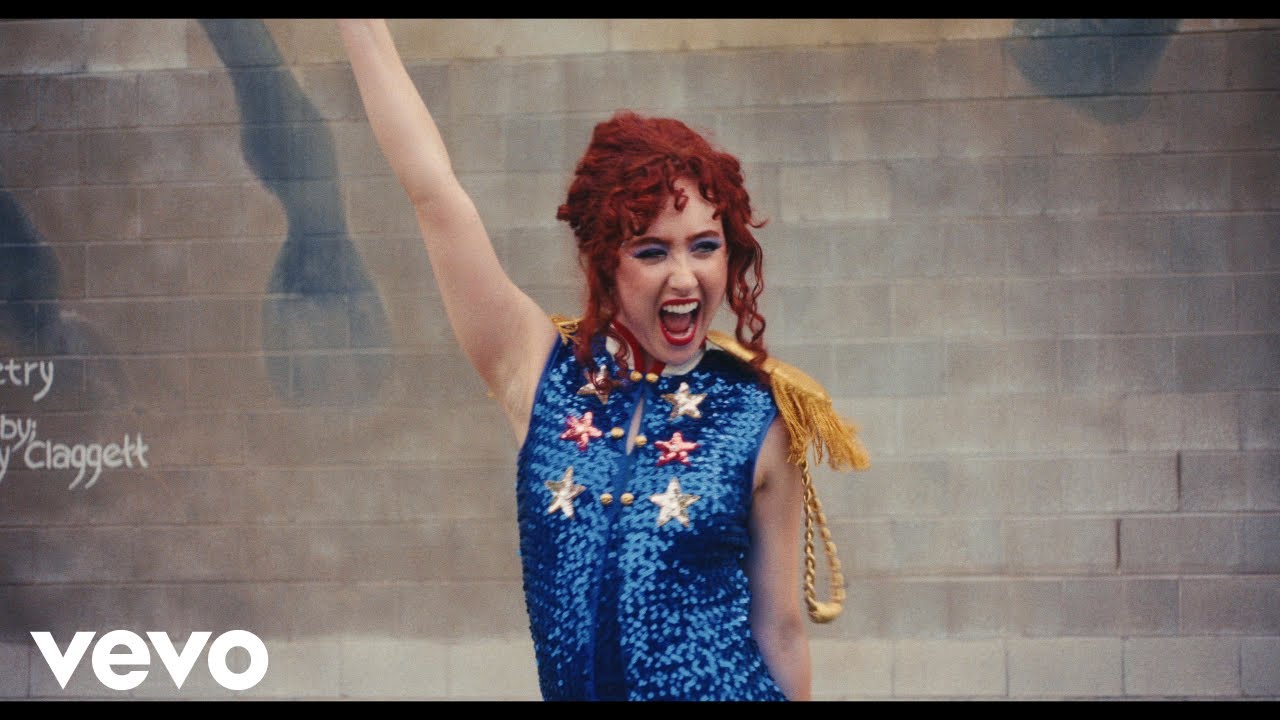Let’s dive deep into Chappell Roan’s “HOT TO GO!”—a song that’s brimming with energy and layered with emotion. Now, keep in mind, this interpretation may or may not reflect what Roan intended, but we’ll unravel it like a story. From the very start, it pulls us in, and each section of the lyrics brings something new to the table.
The opening lines—“Five, six, five, six, seven, eight”—immediately set the tone. It feels like we’re stepping into a dance rehearsal, ready to move. The numbers are rhythmic, suggesting that this is more than just a song—it’s a performance. Roan seems to be inviting us into this carefully orchestrated world where every beat counts, where precision meets fun. It’s a great way to say, “Get ready, we’re about to take off.”
Then, she launches into “I could be the one, or your new addiction.” This is bold. Right away, Roan positions herself as someone powerful, capable of captivating attention. It’s not about being passive here—she’s declaring that she could be the next obsession. But what stands out is the line that follows: “It’s all in my head, but I want non-fiction.” This contradiction adds a layer of vulnerability. She’s fully aware that maybe her desires or fantasies are self-made, but she’s craving something real, something tangible.
Now, “I don’t want the world, but I’ll take this city” really grounds the song. Roan doesn’t need everything, just a piece—a city. The city here feels like a metaphor for control or desire. Maybe she’s saying she’s ready to own her space, her moment, and she’s unapologetic about it. And the cheeky line “Call me hot, not pretty” speaks volumes. She’s rejecting conventional labels. She doesn’t want to be seen as just “pretty”—a word that can often feel superficial. Instead, “hot” carries a sense of energy, empowerment, and even danger.
In the refrain, “Baby, do you like this beat? I made it so you’d dance with me,” Roan draws the listener into a direct conversation. She’s not just performing for herself; she’s doing it for someone else, and she knows the power of the music she’s creating. “It’s like a hundred ninety-nine degrees when you’re doing it with me” cranks up the heat. The heat here isn’t just physical—it’s emotional, too. It’s intense, passionate, and relentless. She’s setting the stage for an electrifying connection.
When we reach the pre-chorus, “H-O-T-T-O-G-O / Snap and clap and touch your toes,” there’s an undeniable rhythm. The repetition of “hot to go” and the playful commands to dance engage the listener, turning the song into a physical experience. It feels like an anthem, a call to let loose and embrace the heat—both literal and figurative. The body roll, the snapping, the clapping—it’s all about movement, freedom, and expression. Roan is calling the shots, and we’re just following along.
The chorus—“H-O-T-T-O-G-O, you can take me hot to go”—is like a catchy mantra. It’s almost like she’s packaging herself as an irresistible, on-the-go meal. The line is playful, but it’s also got layers. There’s a sense of urgency here—Roan is ready, she’s “hot to go,” and she’s not sticking around for anyone to make up their mind. It’s all about seizing the moment.
Then we get to the second verse, where things take a more vulnerable turn: “Well, I woke up alone staring at my ceiling. I try not to care, but it hurts my feelings.” This is where the facade starts to crack a little. Beneath all the bravado and fun, there’s still a very real human experience—loneliness. She’s put herself out there, but she’s still waking up alone. That vulnerability peeks through again with “No one’s touched me there in a damn hot minute.” She’s yearning for connection, both emotional and physical, and this line drives home the ache of that longing.
The refrain repeats, but this time the twist comes with “I made it so you’d sleep with me.” This line feels more direct, raw, and honest. The dance, the beat—it’s all designed to draw someone in, but the ultimate goal, whether it’s emotional or physical intimacy, is laid bare. It’s another layer of vulnerability, disguised in the playful energy of the song.
The bridge—“What’s it take to get your number? What’s it take to bring you home?”—feels like a plea, almost a challenge. Roan is putting it all out there. She’s direct, but there’s a sense of urgency again. Time is ticking—“Hurry up, it’s getting cold.” The contrast of “hot to go” with things “getting cold” is striking. It suggests that this fiery passion, this moment, is fleeting. Roan knows that if someone doesn’t act fast, the moment might pass.
Finally, as we circle back to the chorus, the energy picks up again. We’re reminded of the playful, powerful persona Roan embodies throughout the song. “Whew, it’s hot in here”—this closing section is fun and light, but it’s also a wink to the listener. Roan knows exactly the kind of fire she’s igniting, and she’s confident in it. “You coming home with me?” leaves us with a question, a challenge, as if the entire song has been leading to this moment.
